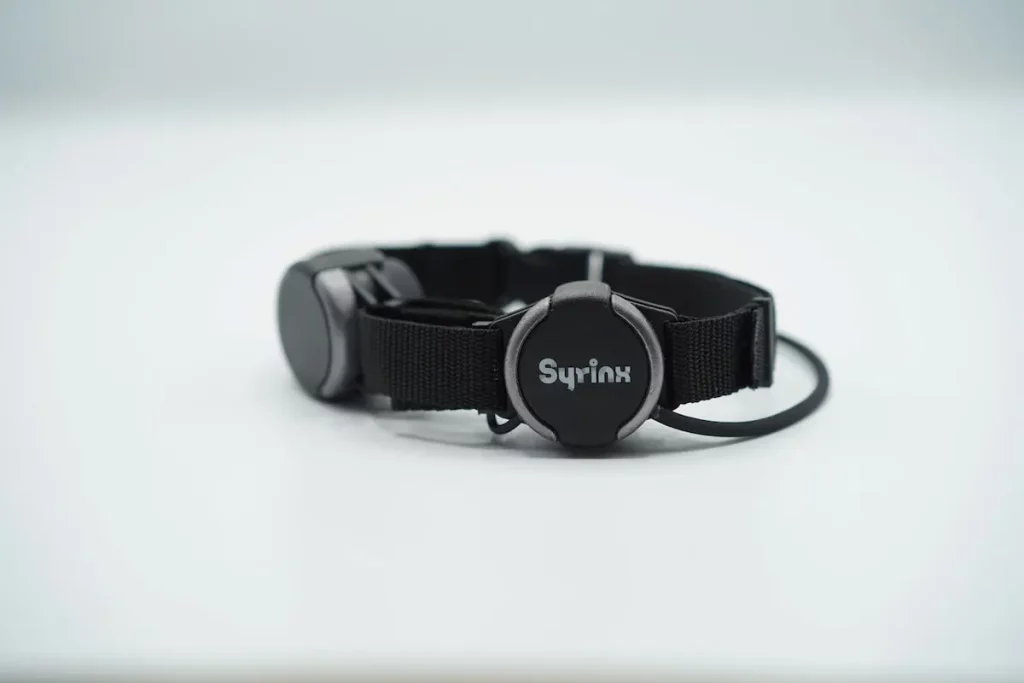Syrinx is the next generation of electrolarynx (EL) devices. It’s currently under development, and is a hands-free EL device that allows people who have lost their voice to regain their voice. It also utilizes machine learning to allow for improved communication in intonation based languages, as well as helping to preserve a person’s unique voice.
Every year, an estimated 300,00 people lose their voice due to causes such as injury or laryngeal cancer. With this in mind, the importance of being able to speak and communicate with others cannot be underestimated. Speaking as a form of communication can have profound effects on multiple areas of a person’s life, affecting their social life, their jobs/livelihoods, and their overall sense of freedom, autonomy, and psychological well-being, to name a few key areas. Currently, people who have lost their voice can use a device called an electrolarynx (EL), which is a handheld device that when placed on the neck near the vocal cords, can help the person to regain their voice. However, while this is certainly a great invention, there are clear limitations of the product, such as the fact that it must be hand-held (which limits the user to one hand at any given point when they would like to speak), it produces a monotonous/robotic voice, and it has not been improved upon in over 20 years. Thus, enter the topic of my blog post: the Syrinx, a hands-free EL device. More specifically, I would like to touch upon 2 specific traits of the Syrinx that I think make the product accessible for those who have lost their voice.
Firstly, the Syrinx is highly innovative in that it uses a neck brace design, making it completely hands-free to use. Looking at this feature from the lens of the social model of disability, I think this is a great step towards allowing EL users to have greater accessibility to their surrounding environments when using the device. More specifically, with traditional EL devices, a user must always dedicate one hand to using the EL device, which may prevent them from simultaneously being able to do things in society that requires the use of both of their arms, such as communicating while needing to carry things in both hands. Of course, society could always improve as well by accommodating more for those who may only have one arm to use, however, in terms of helping people who must use EL devices in everyday life, the Syrinx is a great invention that provides users with greater autonomy when it comes to interacting with and navigating various environments.
Secondly, the Syrinx has another feature that improves upon traditional EL devices, which I found to be innovative. The Syrinx uses machine learning to 1) help understand what intonations a user is trying to vocalize (this is especially important in certain languages such as Mandarin) and 2) generate vibration patterns that better emulate a user’s unique voice. In traditional EL devices, a user’s voice can come across as very monotonous and robotic, which not only makes speaking in intonation based languages difficult, but can also make people feel a loss of identity (basically, they don’t identify with the voice they hear when they speak). Through the lens of the identity model of disability, I think this product is accessible in that it improves communication efficacy, while also allowing users to feel more comfortable with using EL devices. Users can customize the pitch of their voice as well, which may further help EL users with adjusting and identifying with their voice. By still being able to appreciate and hear the uniqueness of their own voice, this may help people who have lost their voice to not feel like their voice has been replaced by a generic robotic voice, but rather, that it is still them.
Link to Syrinx’s website: https://syrinx.community/en/ (it’s still in development and not sold yet)
Cool video to check out: https://www.youtube.com/watch?v=Ssa5M4zdA3Q
